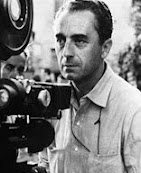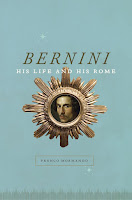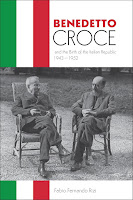Alessandro Algardi – sculptor
Baroque works of art were designed to illustrate papal power
Alessandro Algardi, whose Baroque sculptures grace many churches in Rome, was born on this day in 1598 in Bologna. Algardi emerged as the principal rival of Gian Lorenzo Bernini in the field of portrait sculpture and although Bernini’s creations were known for their dynamic vitality and penetrating characterisation, Algardi’s works were appreciated for their sobriety and surface realism. Many of his smaller works of arts, such as marble busts and terracotta figures are now in collections and museums all over the world. Algardi was born in Bologna, where he was apprenticed in the studio of Agostino Carracci from a young age. He soon showed an aptitude for sculpture and his earliest known works, two statues of saints, were created for the Oratory of Santa Maria della Vita in Bologna. After a short stay in Venice, he went to Rome in 1625. Read more…
_______________________________________
Antonio Conte - football coach
Southern Italian roots of the former boss of Chelsea
Antonio Conte, the coach who led Italy to the quarter-finals of Euro 2016 and later became head coach of Tottenham Hotspur, having previously managed Chelsea in the English Premier League, was born on this day in 1969 in Lecce, the Puglian city almost at the tip of the heel of Italy. As a midfield player for Juventus, he won five Serie A titles and a Champions League. He also played in the European Championships and the World Cup for the Italy national team. After returning to the Turin club as head coach, he won the Serie A title in each of his three seasons in charge before succeeding Cesare Prandelli as Italy's head coach. Conte hails from a close-knit family in which his parents, Cosimino and Ada, imposed strict rules, although as a child Antonio was allowed to spend many hours playing football and tennis in the street with his brothers, Gianluca and Daniele. Read more…
Salvatore Maranzano - crime boss
Sicilian ‘Little Caesar’ who established New York’s Five Families
The criminal boss Salvatore Maranzano, who became the head of organised crime in New York City after the so-called Castellammarese War of 1930-31, was born on this day in 1886 in Castellammare del Golfo in Sicily. Maranzano’s position as ‘capo di tutti capi’ - boss of all bosses - in the city lasted only a few months before he was killed, but during that time he came up with the idea of organising criminal activity in New York along the lines of the military chain of command established in ancient Rome by his hero, Julius Caesar. His fascination with and deep knowledge of the Roman general and politician led to him being nicknamed 'Little Caesar' by his Mafia contemporaries in New York. Installing himself and four other survivors of the Castellammarese War as bosses, he established the principle of replacing the unstructured gang rivalry in New York with five areas of strictly demarcated territory. Read more…
_______________________________________
Mario Bava - filmmaker
‘Master of Italian Horror’ had far-reaching influence
Mario Bava, whose near-50 year career in the film business saw him become a pioneer for horror and other genres in Italian cinema, was born on this day in 1914 in Sanremo. At various times a screenwriter, director, cinematographer and special effects artist, Bava’s work was largely on low-budget productions, yet with his imagination and artistic flair he created films that would have far-reaching influence in the movie industry. Although the content tended towards the macabre, Bava is credited as the driving force behind the first Italian science fiction film in The Day the Sky Exploded (1958), the first big-screen giallo - the Italian murder mystery genre - in The Girl Who Knew Too Much (1963), and the first Italian horror film in I Vampiri - The Vampires - in 1957. His 1960 movie La maschera del demonio - The Mask of the Devil - was Italy’s first Gothic horror. Read more…
__________________________________________
Book of the Day: The Architecture Lover's Guide to Rome, by Elizabeth F Heath
Rome's architectural remains date as far back as the city's founding in the 8th century BCE. The primitive settlement that began on the Palatine Hill grew over the next thousand years to the caput mundi the capital of the world the largest, most powerful presence in the ancient Western world. Along the way, Rome's architectural styles, whether developed organically or appropriated from the cultures it subjugated and absorbed, were physical evidence of the politics, propaganda and pragmatism of the times. Written for readers passionate about Rome and how its architecture is inimitably linked to the city's history, The Architecture Lover's Guide to Rome is the armchair architect's tour of the Eternal City. It provides a timeline that begins with the founding of Rome and documents its significant architectural monuments and styles through the millennia, with photos, maps and practical information for visiting.Elizabeth F Heath is a travel writer, editor and guidebook author living in central Italy. She writes about cultural, culinary, family and soft-adventure travel in Italy, the rest of Europe and points farther.

.jpg)

.jpg)






.jpg)

.jpg)


.jpg)
.jpg)
.jpg)


